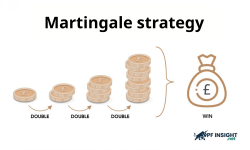In stock investing, understanding the ability to trade quickly or slowly of a stock is an important factor. This is liquidity, which shows the ease of buying, selling and converting stocks into cash without causing large fluctuations in price. So, how to know the liquidity of a stock? Today’s article from PF Insight will help you explore the factors that affect liquidity and effective risk control methods when investing.
- How to backtest on MT5 and avoid common mistakes
- What trading models can teach you about market behavior?
- The Martingale strategy explained: Risks, rewards, and real use cases
What Is stock market liquidity?
Liquidity is a measure of how quickly an asset can be converted into cash at current market prices. In other words, it is like making a purchase or sale in an active and bustling market. When the market has many buyers and sellers, transactions are easy, the selling price is close to the market price, that is high liquidity. On the contrary, if the transaction volume is sparse, sellers are forced to reduce prices to find buyers, showing low liquidity.
Like other assets, stock liquidity refers to the ease with which stocks can be traded. Highly liquid stocks tend to have large trading volumes, ensuring the ability to buy and sell quickly at stable prices. Low liquidity stocks, on the other hand, have few traders, making selling difficult, and small trades can have a large impact on price.
Why do investors need to care about liquidity?

The importance of liquidity lies in maintaining market stability and strengthening investor confidence. When a stock has a high trading volume, its price accurately reflects its real value and is less affected by retail transactions. This helps to minimize the risk of slippage. As a result, investors can be more flexible in making decisions, managing their portfolios and responding promptly to short-term market fluctuations.
High liquidity is a prerequisite for objective asset pricing. When there are many buyers and sellers, stock prices accurately reflect real value based on actual supply and demand. Without sufficient liquidity, prices are susceptible to manipulation or mispricing – being too high or too low relative to real value.
Types of liquidity in trading
Liquidity in the stock market has two main types.
- Market level liquidity: This concept reflects the level of activity in the market. When many stocks are traded in large volumes and continuously, the market is considered to be highly liquid and stable.
- Stock level liquidity: Liquidity levels vary from stock to stock. Stocks that trade in large volumes each day are highly liquid. Stocks of small or less-known companies typically have low trading volumes and are classified as illiquid stocks.
Understanding how to know the liquidity of a stock helps investors easily choose stocks that suit their investment strategy, acceptable risk level and capital management ability, thereby optimizing efficiency and limiting losses during trading in the market.
Main factors affecting liquidity of stocks

How to know the liquidity of a stock? Investors need to consider the following factors:
- Scale of business operations: Businesses with a large name and market capitalization often attract the attention of many investors. Therefore, their stocks are bought and sold more frequently, helping to increase the ability to trade quickly and maintain high liquidity in the market.
- Trading volume: Stocks with high trading frequency in the market are often easier to transfer, thus having high liquidity, allowing investors to quickly enter or exit orders without causing significant price fluctuations.
- Investor sentiment: When the market is in an uptrend, optimism drives active trading activity, thereby improving liquidity. Conversely, during periods of volatility or crisis, investors become more cautious, leading to reduced trading volume and weakened liquidity.
- Market information and price trends: Stocks that appear frequently in financial news or belong to trending industries such as technology and finance often receive great attention from investors, causing active trading activities and increased liquidity.
Factors affecting liquidity are not fixed but fluctuate according to the market. Therefore, investors need to regularly update and analyze them carefully before making a decision to buy or sell stocks to limit risks and optimize profits.
Distinguishing between liquidity and volatility in the stock market
Many investors often confuse liquidity and volatility, but in fact, these are two completely different concepts. Liquidity represents the ability to buy and sell stocks quickly, while volatility reflects the degree of price change in a short period of time. Although different, these two factors are still closely related in trading.
Case 1: When liquidity decreases, volatility increases sharply
Illiquid stocks are more sensitive to price fluctuations. When there are few buyers and sellers, even a single large transaction can cause a significant price change. This volatility increases the risk for investors, but also opens up opportunities for high profits if taken advantage of at the right time.
Case 2: When liquidity increases, volatility decreases
Stocks with high liquidity tend to be more stable in price, as large trading volumes reduce the impact of individual buy and sell orders. As a result, prices fluctuate less. This characteristic attracts cautious investors who prioritize safety in their portfolios.Therefore, when investing in stocks, investors need to consider both liquidity and volatility, because these two factors directly affect the trading ability, risk level and profitability of the investment strategy.
How to know the liquidity of a stock?
Before deciding to invest, you should evaluate the liquidity of a stock. So, how to know the liquidity of a stock? Below are some important factors that help you identify and compare the trading ability of each stock on the market.

Trading volume
Large trading volume
Many investors consider trading volume to be an important measure of a stock’s liquidity. Here’s what different levels of volume mean in assessing market strength and activity.
- High volume shows that the market has many buyers and sellers, facilitating continuous trading.
- Thanks to this, even large orders are matched quickly without causing strong price fluctuations.
- Investors have the flexibility to open or close positions at any time.
Low trading volume
- Low trading volume reflects that there are few active buyers and sellers in the market.
- This lack of liquidity makes order matching slower and prices more likely to slip from expectations.
- When trading in thinly traded stocks, investors may be exposed to the risk of unwanted price movements.
The difference between the buying and selling price
How to know the liquidity of a stock – Another method to use is to look at the spread between the bid and ask prices, as this gap reflects the level of competition and trading activity in the market.
Impact of bid-ask spread on transaction costs:
- When the gap between the buy and sell prices is small, transaction costs will be lower because the matching price is closer to the actual market price.
- Conversely, if the spread is wide, the investor has to pay more to complete the transaction, increasing the total cost of investment.
Market depth
Market depth indicates the number of buy and sell orders placed at different price levels. Traders often rely on observing the depth of the market to determine the level of liquidity, thereby assessing the ability to match orders and price fluctuations of stocks.
- Deeper markets: When the market has great depth, it means that there are many buy and sell orders distributed at different price levels. This reflects the active participation of both sides – buyers and sellers. As a result, large volume transactions can take place smoothly without causing large price fluctuations.
- Shallow markets: A market is said to have limited depth when there are very few buy and sell orders at different price levels. In this case, even a single large trade can cause a large price movement. This indicates that the market is illiquid and large orders are difficult to execute.
Investment strategies suitable for each liquidity level
Trading strategies should be adjusted based on the liquidity of the stock. Depending on whether the stock is highly or poorly liquid, investors will apply different methods to optimize trading efficiency and control risks. Specifically:

Scalping trading strategy
In trading, scalping is a strategy of taking advantage of very small price movements by executing a series of buy and sell orders within a single day. This style of speculator seeks to make quick profits from short-term price fluctuations, often holding the position for only a few seconds or minutes before exiting.
With this strategy, traders can take advantage of liquidity as follows:
|
Tighter spreads |
Faster execution |
| Highly liquid stocks typically have very small buy-sell spreads.
This makes it easy for short-term speculators to take advantage of that small difference to reduce transaction costs, while increasing the chance of executing multiple profitable orders during the day. |
High liquidity allows orders to be matched almost instantly at the desired price. This is important for short-term speculators who need fast trading speed to take advantage of small market fluctuations and make profits in a short period of time. |
High frequency trading (HFT)
High-frequency trading (HFT) uses complex algorithms to automate the order-making process at incredible speed. These systems are capable of processing and executing thousands of trades in a short period of time. Notably, HFT algorithms are programmed to exploit extremely small and short-term price movements, sometimes lasting only a few thousandths of a second.
High-frequency trading (HFT) helps traders exploit opportunities from market liquidity:
|
High liquidity |
Minute Inefficiencies |
| HFT operates most efficiently in highly liquid markets.
High trading volume provides ideal conditions for orders to be executed almost instantly and with little to no significant movement in market prices. The large investor participation and large trading volumes provide many opportunities for HFT algorithms to exploit extremely small price fluctuations to make profits. |
HFT algorithms are programmed to identify and exploit small errors in market prices. Most of these price discrepancies usually stem from:
|
Swing trading strategy
Swing trading is a trading method in which investors hold positions for several days to several weeks to take advantage of price fluctuations during this period. This style aims to profit from sharp price changes, especially in less liquid stocks where sharp increases or decreases often occur, helping to optimize profits in the short to medium term.
In addition, swing trading is often more effective with less liquid stocks, because these codes often experience large price fluctuations, creating high profit opportunities for investors thanks to strong changes between supply and demand in the market.
- Less trading volume
- Wider spread between buying and selling prices
- By applying this strategy, investors can maximize the natural price fluctuations of illiquid stocks, taking advantage of profit opportunities from strong fluctuations in the market.
Position trading strategy
Unlike the previous methods, position trading requires investors to hold orders for a long period of time, from several months to several years. Those who apply this strategy usually seek profits mainly from long-term trends and large market fluctuations. This strategy is suitable for stocks that are traded infrequently but have high volatility, as it aims to capture long-term trends rather than short-term price fluctuations. At the same time, investors following this method are less affected by small fluctuations in the market.
Effective risk management when trading high and low liquidity stocks
By applying appropriate risk management methods, investors can cope with sharp price fluctuations and limit losses. Below are effective ways to control risk for both highly liquid and low-liquid stocks in the market.

Highly liquid stocks
- Set stricter stop loss orders: For highly liquid stocks, it is advisable to set tighter stop loss orders to quickly cut losses when prices go against predictions, effectively controlling risks and protecting investment capital.
- Take profit near the entry point: This method helps investors earn small but continuous profits. Thanks to high liquidity, stock prices fluctuate stably and are easy to predict, creating opportunities to effectively take profit with little risk from unexpected fluctuations.
Low liquidity stocks
- Set a wider stop loss: For low-volatility stocks, it is advisable to set a wider stop loss to withstand larger price swings. This helps avoid premature exits due to normal volatility, while maintaining the opportunity to capitalize on the long-term trend of the stock.
- Place orders carefully: It should be noted that low-liquidity stocks are easily affected by trading orders, leading to price fluctuations that are unfavorable to the position. Therefore, investors should divide orders into smaller ones instead of placing them all at once to limit the risk of sudden price increases or decreases.
In addition, illiquid stocks can cause strong price fluctuations, negatively affecting the investor’s position. Therefore, it is important to apply appropriate measures to minimize the impact of these fluctuations and effectively protect capital.
- Use limit orders instead of market orders to control the execution price.
- Limit the impact of unexpected price fluctuations.
- Continuously monitor stock price movements and order book depth to adjust strategies promptly.
Conclude
Above is information on how to know the liquidity of a stock. Mastering knowledge about liquidity in the stock market is an important factor to help investors make accurate decisions. Liquidity determines the ability to buy and sell stocks quickly without causing strong price fluctuations. When you carefully analyze liquidity, you can choose the appropriate trading strategy, better control risks and increase the chance of achieving sustainable profits in the market.







